culture, ikebana
Ikebana: The Peaceful Art of Harmonizing Nature and Beauty
James Lau
Posted on June 13, 2023
Share:
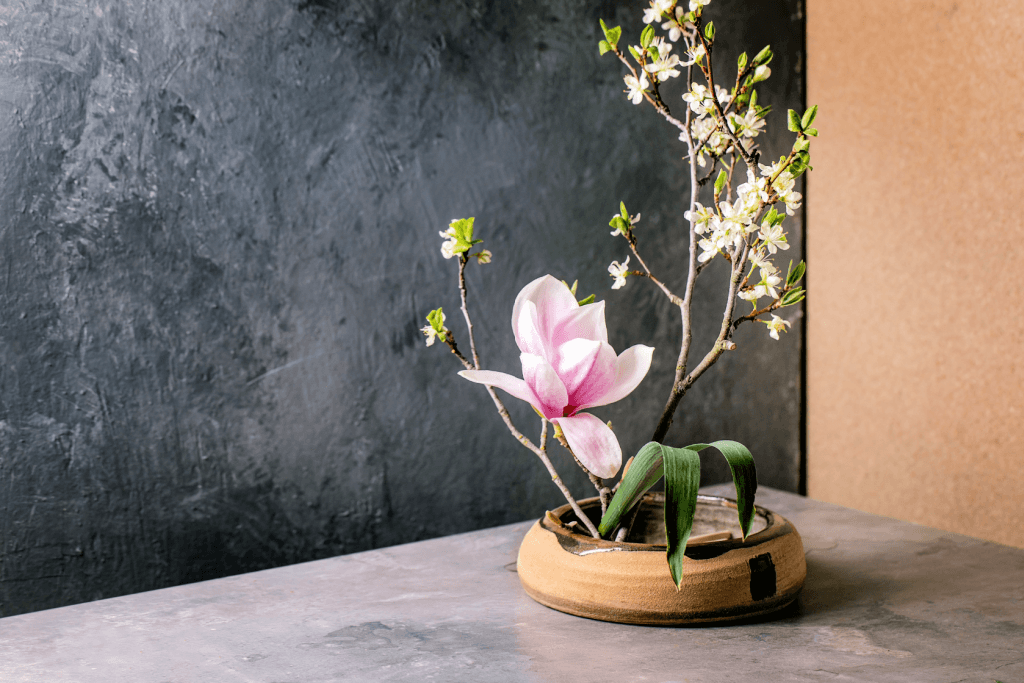
Ikebana is a uniquely Japanese art form that involves arranging flowers thoughtfully and beautifully. It values simplicity, balance, and respect for nature. Throughout history, ikebana has grown from a religious activity to a respected art form. Let’s embark on this journey together and uncover the secrets behind the exquisite art of ikebana.
Origins and Historical Evolution
Generally, the art of ikebana originated long ago in Japan, around the 6th century. It all started when Buddhism, a religion from China, was introduced to Japan. Buddhist monks began offering flowers on temple altars to worship and show gratitude for the beauty of nature. This practice laid the foundation for ikebana as an art form.
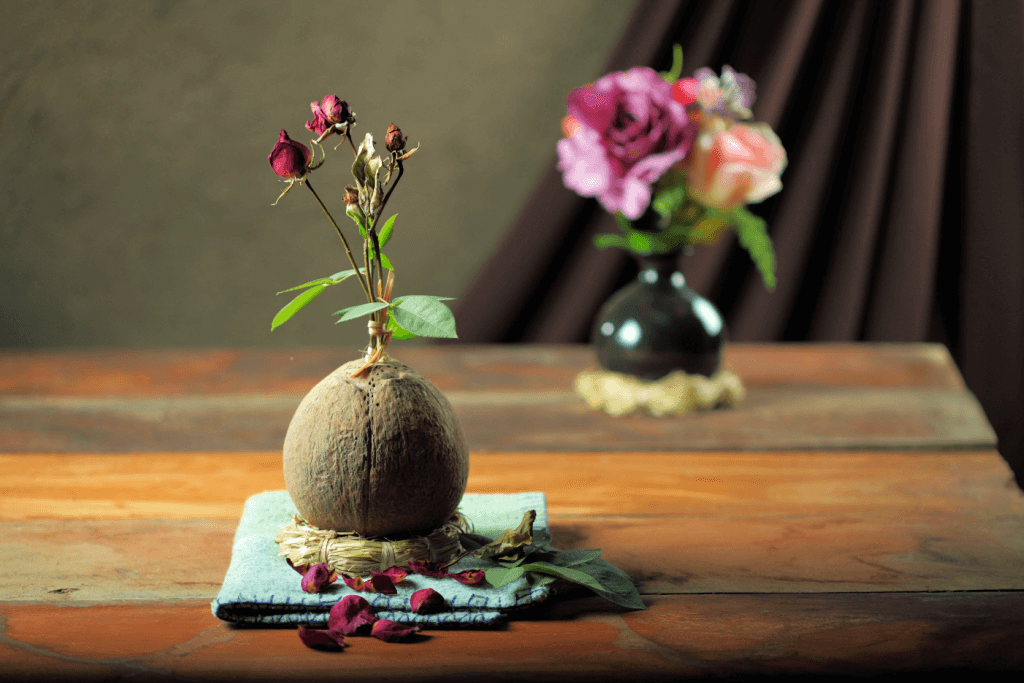
As time passed, it moved beyond its religious roots and became more of an artistic expression. During the Heian period, the upper classes in Japan began to appreciate the beauty of flowers and started their style of floral arrangements. Eventually, they established the first official ikebana school, called the Ikenobo school. The Ikenobo school played a significant role in formalizing flower arrangements as an art form and setting the stage for its future development.
As history progressed, other schools of ikebana emerged, each with its unique philosophy and approach. Even more, these schools added variety and richness to the art form. A critical influence on ikebana was the Zen philosophy, which emphasizes simplicity, mindfulness, and the beauty of things that don’t last forever. This philosophy profoundly impacted the aesthetics of ikebana and led to the development of minimalist styles that aimed to capture the essence of nature.
Principles and Styles of Ikebana
Ikebana follows specific rules that help guide how the flower arrangement. One important rule is the “three elements” concept, which represents heaven, earth, and man. What’s more, the tallest element represents the spiritual world (heaven), the medium-sized element represents the physical world (earth), and the smallest element represents humanity (man). Ikebana undoubtedly creates a sense of balance and harmony by using these three elements.
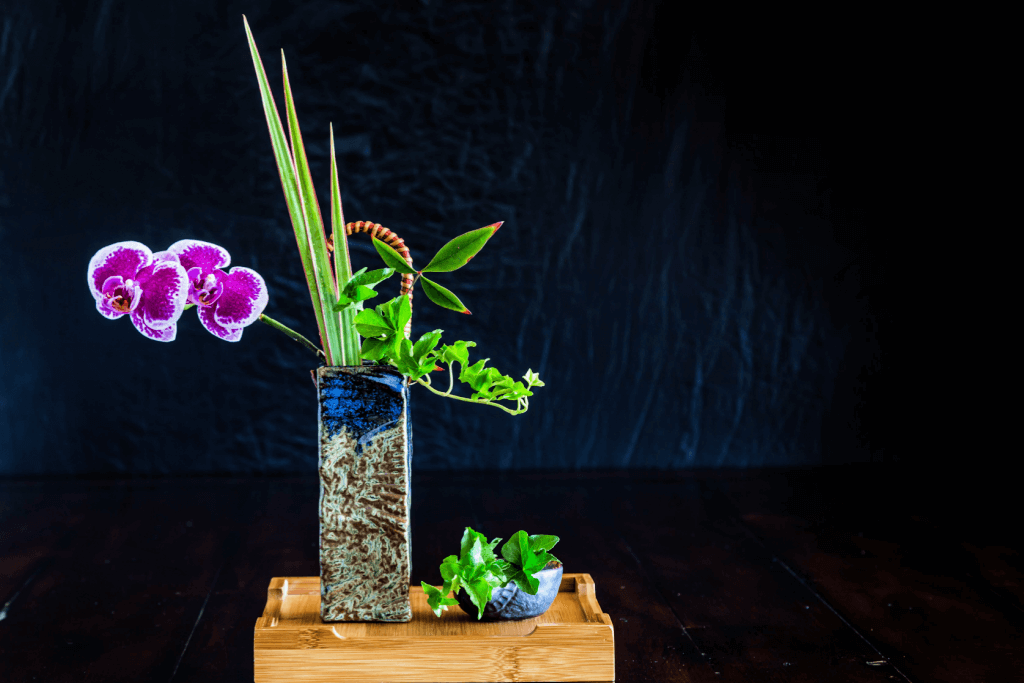
Another important rule in ikebana is simplicity. Each element is chosen carefully and placed in a way that looks beautiful but is also simple. Ikebana likes to use space, called “ma,” to make the arrangement look even more striking. The empty spaces around the flowers are just as important as the flowers themselves.
Eventually, different styles developed. One style is called Moribana, which started in the late 19th century. Moribana’s flowers are arranged in a shallow container using a metal pin frog called a kenzan. To sum up, his container allows for more creativity in the flower arrangement.
Another style is called Nageire, where people place the flowers in a tall vase without using a kenzan. This style requires a good sense of balance and an understanding how the flowers naturally flow. To emphasize, these different styles and principles in ikebana show the creativity and thoughtfulness that goes into arranging flowers. All in all, it’s about finding balance, simplicity, and beauty in each arrangement!
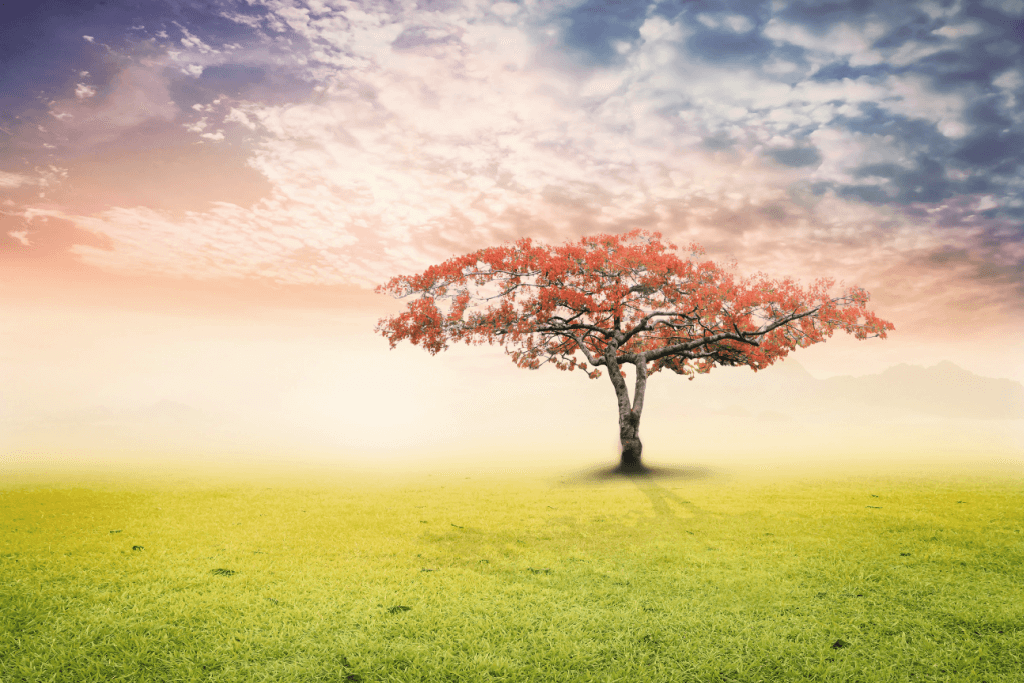
Schools of Ikebana
By and large, ikebana has different schools or traditions, each with its way of arranging flowers. The oldest and most respected school is the Ikenobo school, which started in the 15th century. They focus on using natural materials and following traditional techniques and styles.
Another school is the Ohara School, established in the late 19th century. They introduced the Moribana style, which tries to capture the feeling of landscapes and the changes that happen with the seasons. They like to use various materials like branches, leaves, and unique containers.
Meanwhile, the Sogetsu school, founded in the early 20th century, takes a more modern and experimental approach. They encourage artists to be creative and use unconventional materials, different colors, and unique shapes. As a result, they believe that ikebana can be a way to express yourself and be artistic.
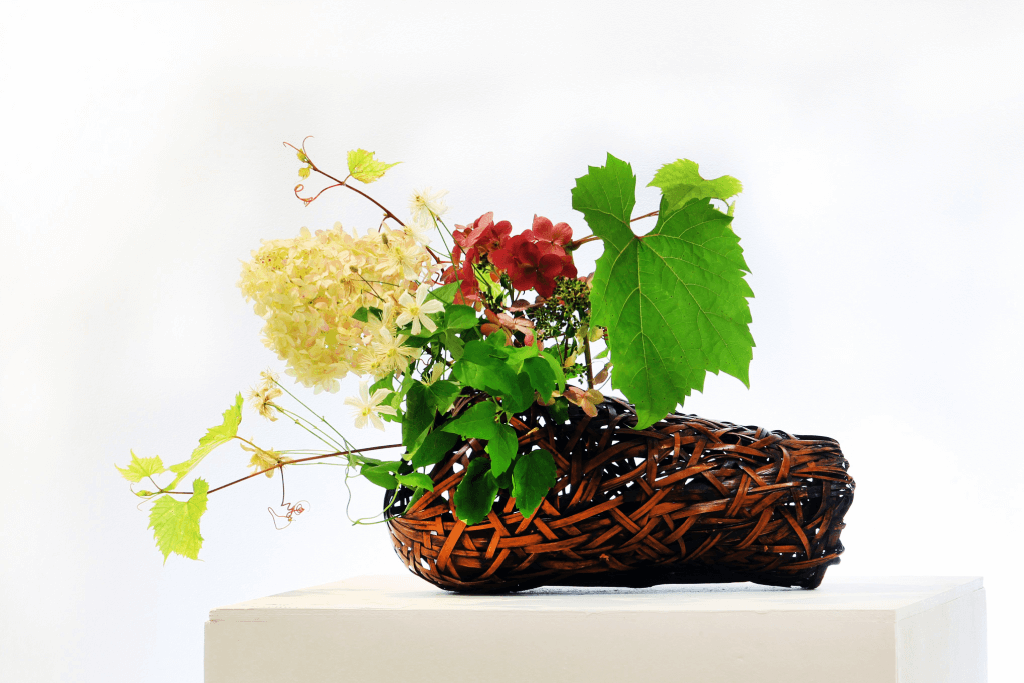
These schools and others have kept ikebana alive and connected to Japanese culture. They have taught many generations of artists their techniques and ideas, ensuring that it remains a cherished part of Japan’s heritage.
Looking for some fantastic snacks to enjoy while marveling at flower arrangements? Try Sakuraco! Sakuraco delivers traditional Japanese snacks, sweets, tableware, and more from local Japanese makers right to your door, perfect for a pleasant snack time at home!
Notable Ikebana Masters
Throughout the history of ikebana, there have been many masters who have had a significant impact on the art form. To this end, these masters have shown incredible skill, artistic vision, and a deep understanding of ikebana’s principles. Their contributions have also shaped the development and evolution of ikebana, inspiring generations of practitioners. All in all, their dedication, creativity, and understanding of ikebana’s principles have impacted the art form.
Senno Ikenobo (15th century):
Senno Ikenobo is considered the founding master of ikebana and the first headmaster of the Ikenobo school. He specifically established ikebana’s fundamental principles and techniques, laying the foundation for future practitioners.
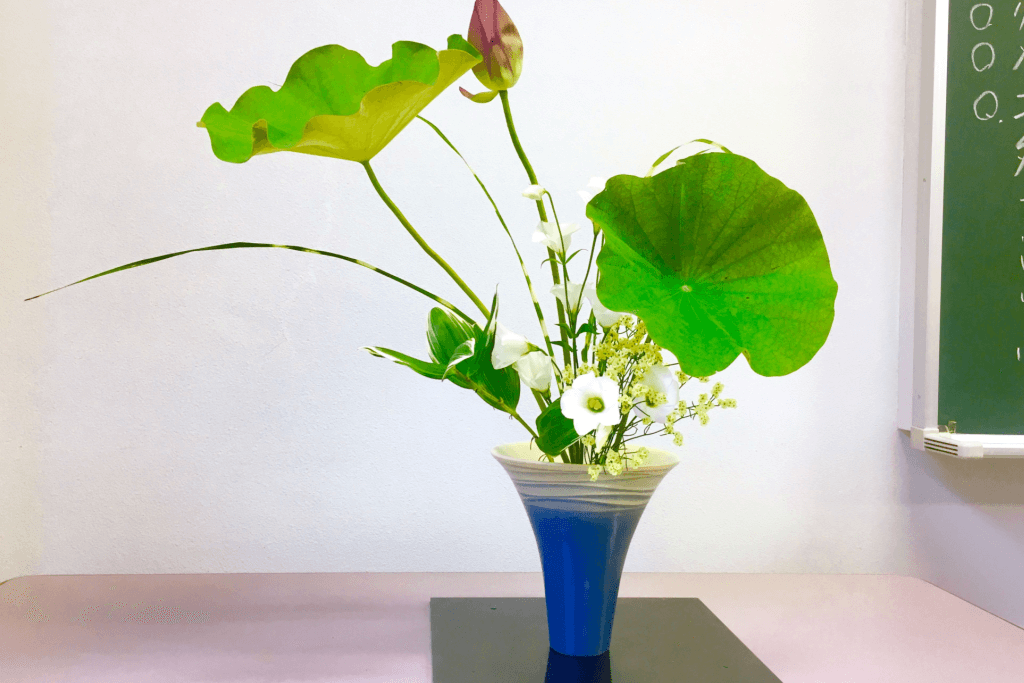
Sofu Teshigahara (1900-1979):
Sofu Teshigahara founded the Sogetsu school and played a crucial role in modernizing ikebana. He encouraged innovation and experimentation, introducing unconventional materials and abstract forms. Sofu Teshigahara expanded the art form’s possibilities and made it more accessible to a broader audience.
Houn Ohara (1877-1961):
Houn Ohara was a prominent figure in the Ohara school. He significantly contributed to developing the Moribana style, which transformed ikebana. Ohara introduced shallow containers and arranged flowers to mimic natural landscapes, allowing for greater creativity and seasonal representation.
Senei Ikenobo (1939-present):
Senei Ikenobo is the 45th headmaster of the Ikenobo school and has been instrumental in preserving and promoting the traditional aspects of ikebana. He has worked tirelessly to ensure the continuation of the school’s teachings, organizing exhibitions and workshops worldwide to share its beauty.
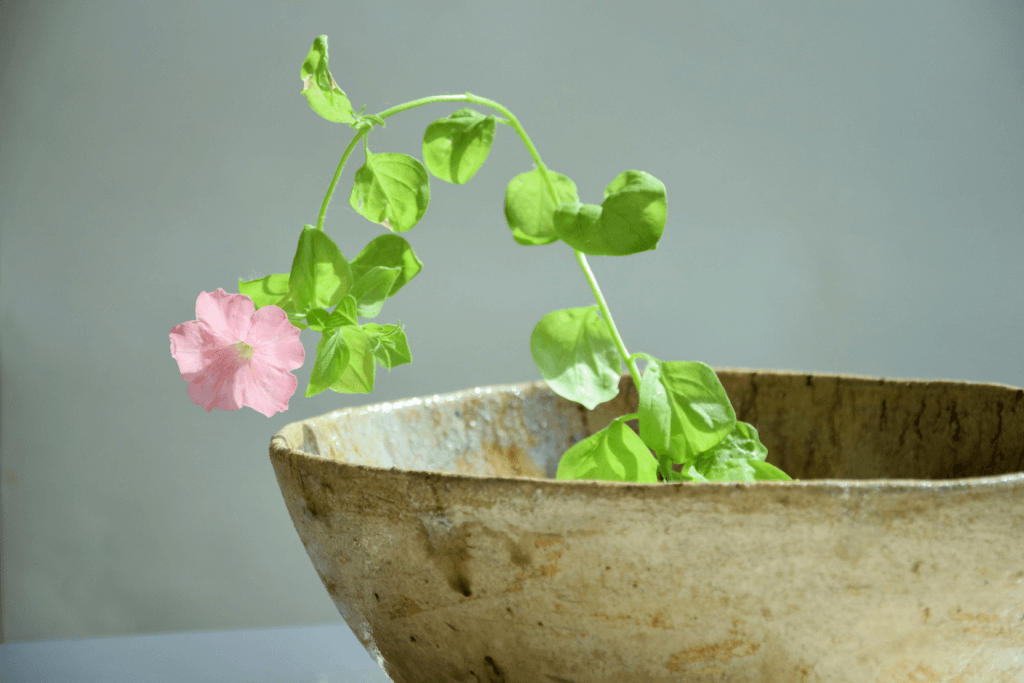
Hiroshi Teshigahara (1927-2001):
Hiroshi Teshigahara, the son of Sofu Teshigahara, was a renowned ikebana master and filmmaker. He combined his artistic talents from both fields, creating flower arrangments that pushed boundaries and blurred the lines between nature, sculpture, and performance art. In other words, Hiroshi Teshigahara’s innovative approach expanded its expressive potential.
Ikebana goes beyond being just a floral arrangement. It is a way to express the deep connection between humans and nature. By arranging flowers elegantly and simply, ikebana leads us to tranquility and harmony. To put it differently, it invites us to engage in a meditative process and appreciate the moment.
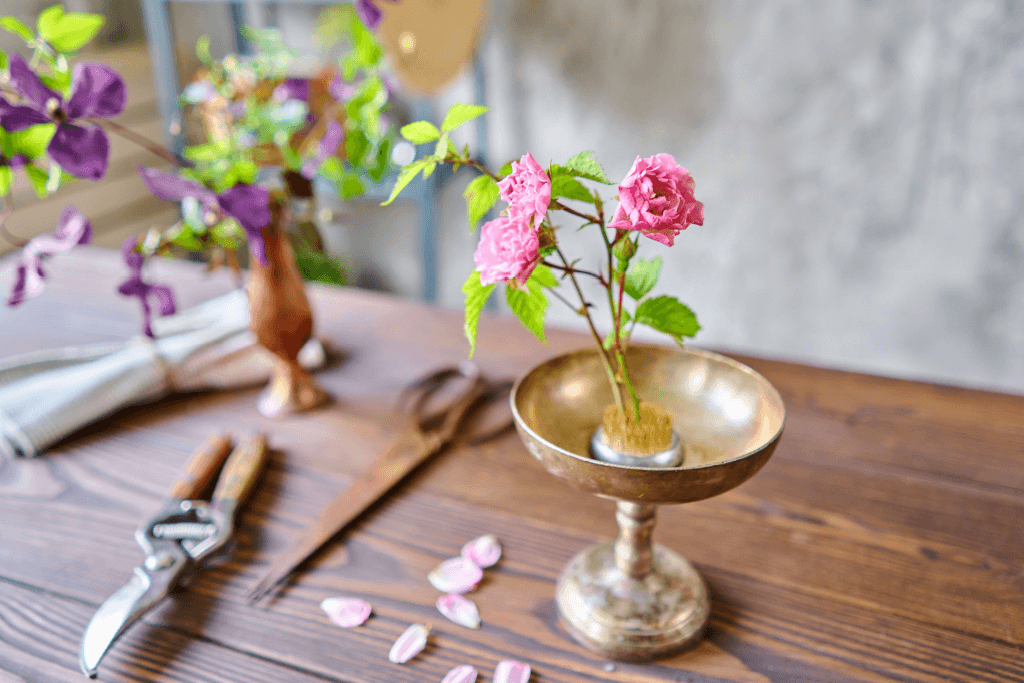
As we end our exploration of this captivating art form, we encourage you to dive into the world of ikebana! Whether you are already familiar with it or are a curious beginner, ikebana invites you to embrace its principles and practices. Discover the joy of selecting each element, creating a composition that harmonizes with nature, and experiencing the peace that comes from connecting with the essence of life.
Let ikebana guide you on self-expression, creativity, and mindfulness. Through traditional flower arrangements, may you find comfort in arranging nature’s precious gifts and unlock the transformative power of balanced beauty. Have you ever tried ikebana before? What thoughts do you have on this art? Let us know in the comments below!

Discover authentic flavors with Sakuraco
Get Sakuraco 

Discover authentic flavors with Sakuraco
Get Sakuraco 
Related Articles

Hatsumode: Why Is It Japan’s Most Important Tradition?
Hatsumode is the first visit to a shrine or temple in the New Year in Japan, and it is one of the country’s most important traditions. Every year, millions of people participate, demonstrating the profound connection between this custom and daily life.

Japanese Fish Bait: The Beautiful Art of Kebari
Kebari are traditional hand-tied flies used for freshwater fishing in Japan, especially in mountain streams where small insects form the main diet of native fish. Instead of bright plastic lures, kebari use feathers, thread, and natural materials to create subtle movements in the water.

Japan Holidays Guide: Relax, Explore, and Delight in Festive Fun
As the year draws to a close, everywhere buzzes with preparations for the holidays, and Japan is no exception. Despite the cold winter weather, you can feel warmth in the scenery, decorations, and festive activities across the country. Let’s explore the unique experiences of holidays in Japan that many people dream of enjoying at least once in their lifetime!

Tokyo Gardens: Five Beautiful Traditional Japanese Gardens to Visit
Tokyo gardens offer a relaxing escape for visitors looking to get a breath of fresh air. However, Tokyo has more than just the typical gardens we see in the West. Let’s explore five traditional Japanese gardens and what makes them unique!



